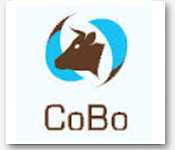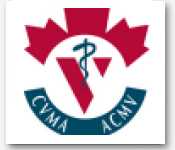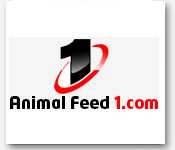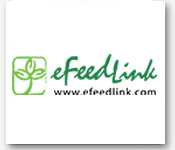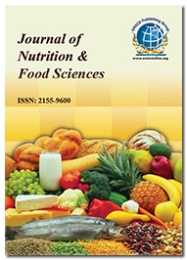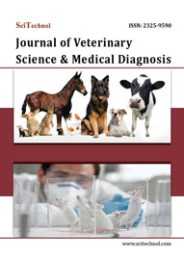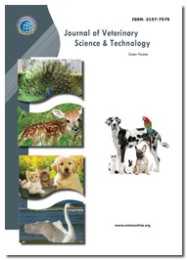Theme: Determining New Sustainable Feeding Strategies and Nutrient Standards
Livestock Nutrition 2015
Track 1: Livestock Nutrition and Health
There are seven major types of nutrients: carbohydrates, fats, fiber, minerals, protein, vitamin, and water which are related to Livestock Nutrition. The program which is recognized by related Livestock Commission and the Feed Additives and Pre-Mixtures Societies. Safe Feed/ Safe Food (SF/SF) Certification which is a voluntary program where which establishes comprehensive standards and regulations, to support or actively encourage feed safety and reduce risk. With the rapid rise of the industrial/feed companies’ food animal production system, where an increasing number of food animals which are raised on pastures are now raised in feedlots. Concerns have been raised about the content of these feeds, however, as grain-based diets can produce serious fatal digestive tract problems in animals such as cows, goats, and sheep which is best suited to digesting high-cellulose containing plants like grass. In addition, the recent studies have shown that the chemical additives in feed which may lead to animal tissues, potentially exposing consumers to unwanted chemicals and heavy metals. It is vital to consider how livestock feed affects animal health, and the health of people who consume those animal products.
From the 1950s to the 1990s most of the trace mineral supplementation given to animals as animal diets was in the form of inorganic minerals, and these which lead to deficiency diseases in farm animals. The role of fertility and reproductive diseases in dairy cattle highlights that organic forms of Zn are retained better than inorganic sources.In Livestock feed manufacturers business, India’s which is one of the largest & producing feed and nutrition products over 10,57,000 tons annually of for dairy cattle, broiler, layer & aquaculture. There are two basic types, fodder and forage. It includes hay, straw, silage, compressed and pelleted feeds, oils and mixed rations, and sprouted grains and legumes. The main ingredients used in the commercially prepared feed industry are the feed grains, which include corn, soybeans, sorghum, oats, and barley. The global animal feed additive market, valued at $14.9 billion in 2013, is estimated to reach $20 billion by 2020.
Ethics of eating animals is the major issue. On this issue many controversy and debate have been arisen. Ethics on animal food supply meetings shows Ethical vegetarians may also object to their agricultural practices present participle of underlie the production of meat, or cite concerns about animal welfare, animal rights, environmental ethics, and religious scruples. In between, some of the meat eaters who object to rearing animals in certain ways, such as in factory farms, or killing them with cruelty; others avoid only certain meats, like veal or Foie gras. The production of animal feeds can be traced back to the late 19th century, around the time passes in human and animal nutrition which is able to identify the benefits of a balanced diet, and the importance of the role processing of certain raw materials played. Corn gluten feed is first manufactured in 1882, while leading world feed producer Purina Feeds was established in 1894. Cargill’s which main production in grains from its beginnings in 1865.
Purina expands and opened its first feed mill in 1927 (which is still in operation). In 1928, the feed industry was revolutionized by the introduction of the first pelleted feeds. The job of the feed manufacturer is to buy the raw materials and blend them in the feed mill according to the specifications.
Animal nutrition is an important aspect of animal healthcare and is about 31% of the total animal health industry. It is estimated that poultry nutraceuticals is growing at compound annual growth rate (CAGR) 9% while cattle nutraceuticals is growing at only CAGR 6%. Animal health nutrition market is driven by milk boosters such as calcium supplements, followed by mineral mixtures and fat supplements. Calcium supplements and mineral mixtures contribute 85% of the total nutraceuticals market in bovine segment and Bypass fat constitutes 4%. Probiotics, Vitamin Premix and other supplements constitute the balance 11%. Similarly, amino acid supplements and toxin binders constitutes 58% of the total poultry nutraceuticals, followed by vitamin premixes 17%, growth promoters 6%, enzymes and probiotics 6%. With the current trend, nutraceuticals market is expected to grow up to `1,300 crore by 2017-18.
Track 2: Animal Husbandry and Modern Agriculture
Animal husbandry is the care and management of farm animals by humans for profit, where genetic qualities and behavior, considered to be advantageous to humans. The term can refer to the practice of selectively breeding and raising livestock to promote different traits in animals for utility, sport, pleasure, or research. Techniques such as artificial insemination and embryo transfer which are frequently used today, not only as methods to guarantee that females breed regularly but also to help improve genetics. This can be done by transplanting the embryos from high-quality females into lower-quality surrogate mothers. On the other hand, which improves the ability of the animals to convert feed to meat, milk, or fiber more efficiently, and improve the quality of the final product, and which also decreases genetic diversity, which increasing the severity of certain diseases. Livestock animal breeding symposiums and Industrial animal husbandry is focused on high level of livestock production. It is necessarily associated with large volumes of waste material and high health risks to the farmed animals. Intensive feeding, waste disposal and healthcare become top priorities. The industrial system could also be an integrated activity, carrying on activities like rearing of young animals, rearing of parent stock, fattening and milk production. Separate economically viable systems need to be devoted to single activity. The processing of slaughterhouse workshops at the industries, dairy plants and tanneries are separately activated and do not come under the purview of industrial livestock production systems. Livestock and poultry are raised on animal feed, much of which is composed of leftovers from processing crops. For example, approximately 43% of a canola seed is oil. Where the excess material after oil extraction is a meal that becomes an ingredient in animal feed and contains canola protein. Likewise, the bulk of the soybean crop is grown for meal and oil.
The global market, in terms of value, is projected to reach $1,371.03 Million by 2020, at a CAGR of 7.3% from 2015 to 2020. Government regulations and technological advancements for feed enzyme exposed the European market to various benefits and advantages. High rate of adoption of feed enzymes by manufacturers drives the North American market to grow at a healthy CAGR of 7.2% from 2015 to 2020.
Track 3: Animal Diseases
Livestock diseases compromise, reduce productivity, animal welfare and can infect humans. Animal diseases can be tolerated and reduced through animal husbandry, which can also be reduced through antibiotics and vaccines. . Antibiotics in sub-therapeutic doses may also be used as a growth-promoter, increasing growth by 10-15%. The issue of antibiotic resistance has limited the practices of preventative dosing such as antibiotic-laced feed. One of the plant poisoning symptoms in dairy cattle are milk sickness and meat fed from white snakeroot plant which contains poison tremetol. Mad cow disease, or bovine spongiform encephalopathy, is a disease that affects cows. The brain and spinal cord of infected cattle animal or dairy animals are considered as more infectious than other parts. Another type of cattle disease is Bovine Respiratory Syncitial Virus where it starts in nasal epithelium throughout the respiratory tract to the bronchial tree. Gangraena emphysematosa which is an gram positive bacterial species which widely seen in Livestock all over the world, affecting goats, sheep and cattel.
Livestock and poultry industries continue to be essential parts of the Missouri’s agricultural economy with annual cash receipts consistently exceeding $2.25 billion. An estimated $300 million annually as a result of livestock disease and parasites, the Division of Animal Health is on guard against disease as the expanding frontier of animal trade requires continual surveillance.
Track 4: Product Processing and Marketing
In the early beginnings of meat marketing might have coincided with the first settlements of mankind and the development of different trades. Meat must be produced, transported, stored and marketed under hygienic conditions. In industrialized countries fresh meat which undergoes modern slaughter facilities and uninterrupted cold chain is applied during cutting, transportation and marketing. Meat inspection and quality control procedures are placed and implementation is observed by Government authorities. Meat works is a facility where the animals are killed for human consumption. Poultry are farmed in great numbers with chickens being the most numerous. More than 50 billion chickens are raised annually as a source of food, for both their meat and their eggs. Environmental conditions which are maintained and automatically controlled in egg-laying systems.
Processed Meat Market worth $799,051.2 Million and Meat Processing Equipment Market worth $11,495.3 Million by 2018. The market revenue is estimated on the basis of important regions such as North America, Europe, Asia-Pacific, and Rest of the World (ROW). The global market for processed meat was estimated to be worth around $361,568.7 million in 2012 and is projected to reach $799,051.2 million by 2018, growing at the CAGR of 14.3% from 2013 to 2018. The global market for meat processing equipment was $7,656.5 million in 2012 and by 2018 it is projected to be $11,495.3 million, growing with a CAGR of 7.2% from 2013 to 2018. Leading manufacturers are focusing on expansion of their respective businesses across regions and setting up new manufacturing plants to ramp up production capacities and broaden overall product line. Major industry participants are involved in new product launches and acquisitions to penetrate the untapped markets of Asia and Latin America
Animal welfare science uses various measures, such as longevity, disease, immune suppression, behavior, physiology, and reproduction, although there is debate about which of these indicators provide the best information. There are some animal rights groups, such as PETA, which support animal welfare measures in the short term to alleviate animal suffering until all animal use is ended. Its terms of reference were to keep under review the welfare of farm animals on agricultural land, at market, in transit and at the place of slaughter and advice Government of any changes that may be necessary. Animal bio-security is a comprehensive approach, encompassing different means of prevention and containment. A critical element in animal bio-security, bio-containment, is the control of disease agents already present in a particular area, and works to prevent novel transmissions. Animal bio-security events and animal bio- security may protect organisms from infectious agents or noninfectious agents such as toxins or pollutants, and can be executed in areas as large as a nation or as small as a local farm. Animal testing, also known as animal experimentation, animal research, and in vivo testing, is the use of non-human animals in experiments. The research is conducted inside universities, medical schools, pharmaceutical companies, farms, defense establishments, and commercial facilities that provide animal-testing services to industry. The humane treatment of animals is important to everyone, and it’s quickly becoming a key criterion for consumers evaluating food products in the grocery store aisle. Third-party verification and certification to ensure that producers are adhering to animal welfare standards at the farm level, through transportation to insensibility, in the processing facility.
The global in vitro toxicity (predictive toxicity) testing market is valued at more than $1.3 billion in 2010. With heightened awareness of animal welfare in laboratory research testing, the in vitrotoxicity testing market has an anticipated value of $2.7 billion in 2015, a compound annual growth rate (CAGR) of 15% between 2010 and 2015. The largest market sector is currently the cosmetics and personal-care industry, which accounts for a market share of more than 50%. This sector is currently valued at $702 million and is expected to reach $1.3 billion by 2015, a compound annual growth rate (CAGR) of 13.1%. The pharmaceuticals segment is one of the most significant with a 32% market share valued at $424 million in 2010. By 2015, this sector is projected to reach a value of $976 million, a compound annual growth rate (CAGR) of 18.2%. In January, a report by BCC Research estimated that the combined in vitro/in silico test market – valued at $4 BILLION (USD) in 2011 and $4.9 BILLION in 2012 – will reach $9.9 BILLION in 2017. According to this analysis, “Europe was the largest contributor to the global in vitro toxicology testing market in 2013. It will also be the fastest growing region till 2018.
Track 6: Environmental Impact of Meat Production
Unless well managed, manure and other substances from livestock operations may cause water contamination. Concerns about such problems are particularly acute in the case of CAFOs (concentrated animal feeding operations). With good management, manure has environmental benefits. Manure deposited on pastures by grazing animals themselves is applied efficiently for maintaining soil fertility. For the most recent year of the five-year compilation, livestock production and dry cleaning had the best environmental records. In comparison with grazing, intensive livestock production requires large quantities of harvested feed. The growing of cereals for feed in turn requires substantial areas of land. Free-range animal production requires land for grazing, which in some places has led to land use change. Grazing sometimes reduces, but sometimes increases biodiversity of grassland ecosystems. The emission percentage includes contributions associated with livestock used for production of draft power, eggs, wool and dairy products, the percentage attributable to meat production alone is significantly lower. Mitigation options for reducing methane emission from ruminant enteric fermentation include genetic selection, immunization, rumen defaunation, diet modification and grazing management, among others.
A new report from FAO says livestock production is one of the major causes of the world's most pressing environmental problems, including global warming, land degradation, air and water pollution, and loss of biodiversity. Using a methodology that considers the entire commodity chain, it estimates that livestock are responsible for 18 percent of greenhouse gas emissions, a bigger share than that of transport. The livestock sector is by far the single largest anthropogenic user of land. Grazing occupies 26 percent of the Earth's terrestrial surface, while feed crop production requires about a third of all arable land. Expansion of animal grazing workshops and grazing land for livestock is a key factor in deforestation, especially in Latin America: some 70 percent of previously forested land in the Amazon is used as pasture, and feed crops cover a large part of the reminder.
Agribusiness is the business of agricultural production. The term was coined in 1957 by Goldberg and Davis. Workshops on animal livestock & agribusiness which includes agrichemicals, breeding, crop production (farming and contract farming), distribution, farm machinery, processing, and seed supply, as well as marketing and retail sales. All agents of the food and fiber value chain and those institutions that influence it are part of the workshops on animal livestock & agribusiness and agribusiness system. Intensive farming or intensive agriculture also known as industrial agriculture is characterized by a low fallow ratio and higher use of inputs such as capital and labour per unit land area. Smaller intensive farms usually include higher inputs of labor and more often use sustainable intensive methods. Mammalian livestock can be used as a source of milk, which can in turn easily be processed into other dairy products, such as yogurt, cheese, butter, ice cream, kefir, and kumis. Using livestock for this purpose can often yield several times the food energy of slaughtering the animal outright. The meat products are the useful form of dietary protein and energy. Organic farming is a form of agriculture that relies on techniques such as crop rotation, green manure, compost, and biological pest control.
Sector revenue is forecast to grow at an annualised 1.9% over the five years through 2014-15, to reach $237.7 billion. Africa’s food and beverage markets are projected to reach $1 trillion by 2030. By way of comparison, the current size of the market is $313 billion, offering the prospect of a three-fold increase, bringing more jobs, greater prosperity, less hunger, and significantly more opportunity enabling African farmers to compete globally.
Track 8: Livestock Nutrition Centers
It is a member of the CGIAR and focuses its research on building sustainable livestock pathways out of poverty in low-income countries. ILRI works with partners worldwide to help poor people keep their farm animal’s alive and productive, increase and sustain their livestock and farm productivity and find profitable markets for their animal products. In livestock conferences and agriculture today, nutritional needs of farm animals are well understood and which may be satisfied through natural forage and fodder alone, or augmented by direct supplementation of nutrients in concentrated, controlled form. Fodder or animal feed is any agricultural foodstuff used specifically to feed domesticated livestock, such as cattle, goats, sheep, horses, chickens and pigs."Fodder" refers particularly to food given to the animals (including plants cut and carried to them), rather than that which they forage for themselves (see forage). It includes hay, straw, silage, compressed and pelleted feeds, oils and mixed rations, and sprouted grains and legumes.
Track 9: Animal Slaughter Practices
Animal slaughter and slaughterhouse workshops is the killing of nonhuman animals, usually referring to killing domestic livestock. In general, the animals would be killed for food; however, they might also be slaughtered for other reasons such as being diseased and unsuitable for consumption. Many countries have adopted the principle of a two-stage process for the non-ritual slaughter of animals. This is to ensure a rapid death with minimal suffering. The first stage of the process, usually called stunning, renders the animal unconscious, and thus not susceptible to pain, but not necessarily dead. In the second stage, the animal is killed. Countries differ in the methods which have been legalized for different species or different ages, some regulations being governmental, others being religious. The Meat Inspection Regulations define the conditions for the humane slaughter of all species of food animals in federally registered establishments. Some of the provisions contained in the regulations include:
- guidelines and procedures for the proper unloading, holding and movement of animals in slaughter facilities
- requirements for the segregation and handling of sick or injured animals
- requirements for the humane slaughter of food animals
The Department for Environment, Food and Rural Affairs, is the main governing body responsible for legislation and codes of practice covering animal slaughter in the UK. Each of these methods is outlined in detail, and the regulations require that inspectors identify operations which cause "undue" "excitement and discomfort" of animals. Slaughtering animals on a large scale poses significant logistical problems and public health requirements and public aversion in many cultures influences the location of slaughterhouses.
Each day in normal (non-FMD times), around 100,000 cattle, sheep and pigs are slaughtered for food in the UK, as well as 2 million chickens a day. A modern abattoir slaughters pigs and sheep at the rate of 300 an hour and chickens at the rate of up to 200 a minute. The European Union (EU) as a whole slaughters 300 million cattle, sheep and pigs each year. That amounts to over 800,000 each and every day. In addition, the EU slaughters 4,000 million chickens a year – that is over 10 million each day.
Canning is a method of preserving food in which the food contents are processed and sealed in an airtight container. Canning provides a shelf life typically ranging from one to five years, although under specific circumstances it can be much longer. To prevent the food from being spoiled before and during containment, a number of methods are used: pasteurisation, boiling (and other applications of high temperature over a period of time), refrigeration, freezing, drying, vacuum treatment, antimicrobial agents that are natural to the recipe of the foods being preserved, a sufficient dose of ionizing radiation, submersion in a strong saline solution, acid, base, osmotically extreme (for example very sugary) or other microbially-challenging environments. Canned fish are fish which have been processed, sealed in an airtight container such as a sealed tin can, and subjected to heat. Slaughterhouse waste is defined as animal body parts cut off in the preparation of carcasses for use as food. This waste can come from several sources, including slaughterhouses, restaurants, stores and farms. In the UK, slaughterhouse waste is classed as category 3 risk waste in the Animal By-Products Regulations, with the exception of condemned meat which is classed as category 2 risk.
The North American regional market for pet food was worth US$21.7 billion in 2011 and is expected to grow at a CAGR of 3.5% to reach US$26.6 billion. Globally, Europe is the second largest regional market for pet food and is forecast to grow at a 4.4% CAGR from 2011 to 2017. Federal health authorities have estimated that food borne diseases sicken 1 in 6 Americans (or 48 million people), cause 128,000 hospitalizations, and kill 3,000 Americans every year. Likewise, a number of studies have confirmed the presence of harmful bacteria in meat in the US. After collecting ground beef samples from meat processing plants around the country in 1996, the USDA determined that 7.5% of the beef samples were contaminated with Salmonella, 11.7% were contaminated with Listeria monocytogenes, 30% were contaminated with Staphylococcus Aureus, and 53.3% were contaminated with Clostridium perfringens. Due to population growth, urbanization, and increased per capita demand for meat products, livestock and poultry production is projected to grow four times faster in developing countries than in high-income countries, with growth in pork and poultry more than twice the growth in the production of ruminate meat.
Livestock Nutrition 2015 welcomes attendees, presenters and exhibitors from all over the world to attend and register for the “International Conference on Livestock Nutrition (Livestock Nutrition 2015)” focusing on the theme “Determining New Sustainable Feeding Strategies and Nutrient Standards” which is going to be held during August 11-12, 2015 in Frankfurt, Germany.
OMICS International organizes 1000+ Global Events inclusive of 300+ Conferences, 500+ Workshops and 200+ Symposiums on various topics of Science & Technology across the globe with support from 1000 more scientific societies and Publishes 500+ Open Access journals which contains over 50000 eminent personalities, reputed scientists as editorial board members.
OMICS International organizes 300 conferences every year across USA, Europe & Asia with support from 1000 scientific societies and publishes 400 open access journals which contains over 30000 eminent personalities, reputed scientists as editorial board members.
According to a study, Germany has around 12.9 million head of cattle in total, including 4.2 million dairy cows and 0.7 million suckler cows. Germany has the largest dairy cattle herd and the second largest cattle population in the European Union. At about 20% Germany has the largest pig population in the EU. Around 1,700 breeding farms (nucleus and multiplication breeding) keep about 100, 000 registered breeding animals. Foreign demand for breeding and slaughter pigs, piglets and semen increases year by year. German breeders meet this demand with a wide range of products. In Germany the poultry industry currently consists of around 34 million laying hens, 60 million broilers and 11 million turkeys for meat production. Many German firms which manufacture animal feed and feed additives are the leading players in the livestock industry.
Livestock conferences contributes directly to the livelihoods and food security of almost a billion people and affects the diet and health of many more. Livestock is needed for many reasons which include analyses of the social and economic aspects of the livestock sector; the environmental impacts of livestock such as the production and management of waste, greenhouse gas emissions and livestock-related land-use change; and large-scale public health and epidemiological investigations. Livestock sector on animal feed manufacturers workshops directly influences agricultural sector and therefore it targets a wide range of audience such as Livestock Feed manufacturing industries, R&D scientists in the field of Livestock Science, Veterinarians and Animal Health experts.
The scientific sessions of Livestock Nutrition conference series which focus on livestock nutrition and health, animal husbandry and modern agriculture, animal diseases, animal feed industries and the products manufactured, environmental impact of meat production and various other aspects directly concerning livestock science.
We look forward to see you in the magnificent city of Frankfurt.
For more information, please visit Livestock Nutrition.
To share your views and research, please click here to register for the Conference.
To Collaborate Scientific Professionals around the World
| Conference Date | August 11-12, 2015 | ||
| Sponsors & Exhibitors |
|
||
| Speaker Opportunity Closed | Day 1 | Day 2 | |
| Poster Opportunity Closed | Click Here to View | ||
Useful Links
Special Issues
All accepted abstracts will be published in respective Our International Journals.
Abstracts will be provided with Digital Object Identifier by
















